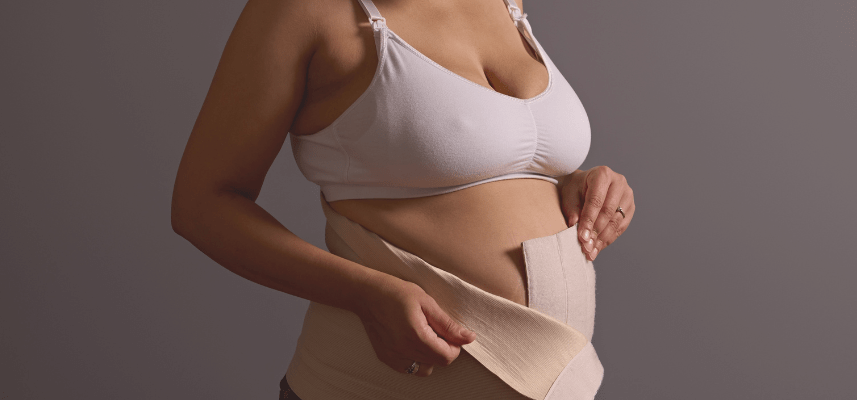You've got places to go and people to see, Mama! But before you catch your next flight, you may want to consider how traveling can affect or worsen common physical symptoms of pregnancy. Air travel can be especially exhausting when you are expecting, and it may also cause swelling in the feet and legs. So before you take off, learn how many pregnant women use compression socks to protect their health - on the ground and in the air!
Why Pregnant Women Need Compression Socks While Flying
First of all, can you fly while pregnant? Yes, it is safe to fly during pregnancy even in the third trimester. With a healthy pregnancy, most airlines will allow mothers to fly until the 36th week of their pregnancy. This policy applies to passengers, those who travel frequently for work, flight attendants, and pilots. Just be sure to check with your doctor beforehand and check with your airline to determine their policies.
For example, after 28 weeks you may need a signed letter from your doctor clarifying that you will be unlikely to give birth during the flight. You might not be asked for it while boarding every flight, but keep it in a carry-on so it's easy to access just in case.
Alright, we know what you're thinking. If flying is safe while pregnant, why do you need a doctor's note? While there is no evidence that flying or being in a pressurized cabin is harmful to an unborn baby, sitting for long periods of time can affect your health.
Risks Associated With Pregnant Flying
Deep Vein Thrombosis
Flying increases the risk for Deep Vein Thrombosis (DVT), which occurs when a blood clot forms in one or more of your deep veins, usually in the legs. They can cause swelling and pain in the legs, but most importantly, the blood clots can break loose and travel through your bloodstream and into the lungs, resulting in blocked blood flow (pulmonary embolism). In fact, pregnancy increases the risk of DVT by 5 times, and it is the leading cause of maternal death in the developed world.
Periods of prolonged sitting on a plane under the increased weight of your growing baby can make it more difficult for your legs to have proper circulation. Plus, during pregnancy, your blood clots more easily to lower the risk of losing too much blood during delivery.
Not every flight will put you at risk. Evidence shows that flights lasting four hours or less have a low increase in risk. If you experience any DVT symptoms, speak with your doctor immediately. Symptoms include:
- Leg pain
- Leg swelling, warmth, and discoloration around the affected area
- Shortness of breath
- Chest pain
- Feeling lightheaded
- Rapid pulse

Varicose Veins
Flying while pregnant also <strong>increases the risk of varicose veins</strong>, usually in the legs. These veins are enlarged, swollen, purple or blue in appearance and can be a source of aching, swelling, and discomfort, as well as a cosmetic concern. Symptoms of varicose veins include:
- Leg cramps
- Itchy legs
- Mild swelling in the legs or feet
- Discolored veins
- Leg aches and pains
Edema
As many as two-thirds of expectant mothers experience edema, or the swelling and collection of fluid mainly in their legs, especially after sitting during a long period of travel. This can cause the legs to be stiff, painful, and limit mobility.
This risk for edema increases with pregnancy because your body begins to increase blood volume to support your growing baby. Then under the extra pressure and weight of your expanding uterus, it becomes harder to pump blood up from the legs and excess fluid may collect in the surrounding tissues as a result. Edema can increase the risk of preeclampsia, so contact your doctor immediately if you recognize any of the following symptoms:
- Swollen feet, legs, and ankles
- Swelling may also occur in the hands and face
- Tight clothes or shoes
- Skin that dimples or has an imprint upon being touched
- Painful stiffness among the affected area
How Compression Socks Can Help
Compression socks are medically designed to provide gradual compression or pressure to the leg in order to improve circulation, reduce swelling, and to increase comfort for daily relief during pregnancy, especially during long periods of travel.
They generally have the most pressure around the ankles and become looser towards the knee and thigh. They help veins circulate blood and prevent fluid from collecting. One study found that with the use of compression stockings while expecting, mothers had significantly improved circulation with reduced fluid retention.
As 30% of pulmonary embolism cases are associated with DVT, it's important for pregnant women to speak with their doctors about compression. Compression garments may even be available through insurance as a medical necessity and we can help!
Compression socks also assist with:
- Reduced swelling and discomfort
- Increased blood circulation
- Minimized risk of varicose veins
Bonus Tips!
In order to improve your circulation during a long trip, a long day of work, and more, along with the use of your compression stockings, it can be very beneficial for your health to:
- Get up and move around to walk or stretch for 3 to 4 minutes every hour.
- Use an aisle seat to make getting up and stretching easier.
- Flex and stretch your muscles while sitting.
- Stay hydrated. The cabin air has very little moisture in it, which can lead to dehydration.
- Avoid wearing tight clothes.
- Avoid becoming stressed.










